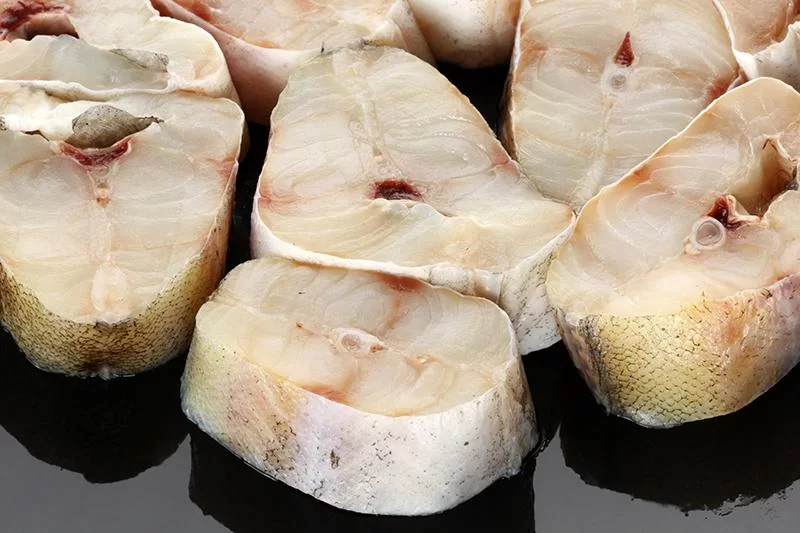Last Updated July 23, 2019
I reviewed your recent routine trans fatty acids (TFA) analysis reports from the three commercial analytical labs: (1) Midwest Laboratories, (2) Eurofins Nutritional Analysis Center, and (3) Merieux Silliker Laboratory. The lab report analysis focused on fatty acid levels of your company’s cod liver oil samples and cod liver oil samples from five other different companies that sell cod liver oil. Midwest Lab analyzed eight cod liver oil samples from your company and six cod liver oil samples from other companies. Your company’s oil samples had a TFA average of 1.21%+0.51 (ranged from 0.54 to 2.01), the other commercial cod oil’s TFA ranged from 0.26% to 2.13%. The report from the Eurofins Nutritional Analysis Center indicated that your company’s oil contained 0.81%+0.23. Merieux Silliker Laboratory report showed that your company’s oil had 0.60%+0.10 (ranged from 0.50 to 0.75) TFA and that the other companies’ oils had a TFA range from 0.65 and 0.90%.
There are a number of foods that contain low levels of trans fatty acids. For example, low levels of trans fatty acid may naturally present in bovine milk fat (0.6 – 3.9%) (Mansson, 2008), beef meat (3.6%) (Woods & Fearon, 2009), and dairy creams (3.02 to 4.11g/100 g) (Jan et al., 2011). This may be the result of microbial hydrogenation of cis-unsaturated fatty acids in the stomach of ruminant animals (Bauman & Griinari, 2003). The occurrence of TFA may also be a result of processing. Ackman and Mag (1998) and Ceriani and Meirelles (2007) have reported that small amounts of TFA found in refined edible oils could be due to the high temperatures used during the refining procedures. In general, a significant quantity of TFA is in industrially produced (high temperature processes) partially hydrogenated vegetable oils (Filip, Fink, Hribar, & Vidrih, 2010). Deodorization of oils or fats during refining or cooking can also produce TFA (Kodali, 2005). Please note that your oil extraction does not employ high temperatures; therefore, the small amount of TFA found in your company’s cod liver oil is not a result of your processing.
In general, the fish oil industry uses only mild heat or cold pressing to extract oil. Relatively high temperatures produce TFA from the oil. For example, Wolff (1994) has reported that oil generates TFA when oils are heated above 180oC. The origination of TFA can be identified using TFA isomers. Vaccenic acid (t11-C18:1) is expected to predominant in ruminant TFA (Scientific Advisory Committee on Nutrition, 2007). In my opinion, TFA in the cod oils analyzed by the three labs is not a result of thermal processing regardless of the company of origin.
In recent years, due to consumer awareness, consumers prefer food with no TFA. This would be achievable only with ideal process conditions (for example, low temperature) and raw materials, which do not contain TFA. Please note that all processed food may contain small amounts of TFA. For example, Roe et al (2013) have analyzed several foods for TFA and reported significant amounts of TFA in cod (fried in batter), potato chips, dairy ice cream, garlic and herb baguettes, spreadable butter and pizza. According to the Department of Health in the United Kingdom, TFA consumption should not exceed 5 g /day (United Kingdom, 1994). Your oil contained a relatively low level of TFA (an average of 1.21%). At this level, it would require about 413 g of cod liver oil to reach the 5 g TFA limit. In general, about two full cups of fish oil per day exceeds normal consumption levels.
There are low amounts of TFA naturally present in fish. For example, thawed mackerel (frozen) contained a total of 1.1% TFA (0.5% c16:1t and 0.6% c18:1t) according to published data by Stolyhwo et al (2004). Sirot et al (2008) have published an article that shows there are several fresh and/or frozen fish muscles including cod, pollock, and salmon that contain low levels of TFA. In my opinion, the small amount of TFA in your company’s and other companies’ cod liver oils may come from cod fish.
Thank You,
Subramaniam Sathivel, Ph.D.
About The Author
Dr. Sathivel is the Professor of Food Engineer at the School Nutrition and Food Sciences and the Department of Biological and Agricultural Engineering, Louisiana State University Agricultural Center (LSUAC). Before joined LSUAC, Dr. Sathivel worked five years as an Assistant Professor of Seafood Processing and Engineering at the Fishery Industry Technology Center (FITC), University of Alaska Fairbanks, Alaska. He is responsible for the food process engineering laboratory at the LSUAC, where his projects include design and development of an adsorption technology to purify fish oils and fish protein, value added products, edible films and edible coatings. Dr. Sathivel has published 60 refereed articles, two popular articles, five book chapters, and six proceedings. Dr. Sathivel has an equally respectable record of published abstracts and professional presentations, many of which were invited talks at international scientific meetings and conferences.
Lab Results
Here is a summary of all the lab reports in one chart:
Trans Fat Levels
Midwest Laboratories 2323815.pdf – Sample ID CLO Sample F
Midwest Laboratories 2440460.pdf – Sample ID FCLO 20946ABS
Midwest Laboratories 2440461.pdf – Sample ID FCLO 07252ABS
Midwest Laboratories 2440462.pdf – Sample ID FCLO 05751ABS
Midwest Laboratories 2440465.pdf – Sample ID C14061815
Midwest Laboratories 2440466.pdf – Sample ID C15061815
Midwest Laboratories 2440467.pdf – Sample ID C16061815
Midwest Laboratories 2440468.pdf – Sample ID FCLO 31641ABS
Midwest Laboratories 2443253.pdf – Sample ID CLO Sample E
Midwest Laboratories 2443254.pdf – Sample ID CLO Sample D
Midwest Laboratories 2443714.pdf – Sample ID VHM15031 or FCLO15031
Midwest Laboratories 2460598.pdf – Sample ID CLO Sample A
Midwest Laboratories 2460599.pdf – Sample ID CLO Sample B
Midwest Laboratories 2460600.pdf – Sample ID CLO Sample C
Merieux NutriSciences COA-16-Nov-15-38507821-0.pdf
Merieux NutriSciences COA-27-Oct-15-38448701-0.pdf
Eurofins Nutritional Analysis Center AR-15-QD-115048-02[20159231715].pdf
References
Ackman, R. G., & Mag, T. K. (1998). Trans fatty acids and the potential for less in technical products. In Trans fatty acids in human nutrition (pp. 35-58). The Oily Press Dundee.
Bauman, D. E., & Griinari, J. M. (2003). Nutritional regulation of milk fat synthesis. Annual review of nutrition, 23(1), 203-227.
Britain, G. (1994). Nutritional aspects of cardiovascular disease. HM Stationery Office.
Jan, M., Filip, S., Polak, T., Hribar, J., & Vidrih, R. (2011). Quantitative comparison of the fatty acid composition of dairy and artificial creams and their nutritional value in the human diet. Milchwissenschaft-Milk Science International, 66(2), 186.
Lindmark Månsson, H. (2008). Fatty acids in bovine milk fat. Food & nutrition research, 52(1), 1821.
Kodali, D. R. (2005). Trans fats—chemistry, occurrence, functional need in foods and potential solutions. In Trans fats alternatives (pp. 1-25). AOCS Press Champaign.
Roe, M., Pinchen, H., Church, S., Elahi, S., Walker, M., Farron-Wilson, M., … & Finglas, P. (2013). Trans fatty acids in a range of UK processed foods. Food chemistry, 140(3), 427-431.
Shaw, D. I., Thompson, A. K., Minihane, A. M., & Williams, C. M. (2007). Update on trans fatty acids and health: Position statement by the Scientific Advisory Committee on Nutrition (SACN).
Sirot, V., Oseredczuk, M., Bemrah-Aouachria, N., Volatier, J. L., & Leblanc, J. C. (2008). Lipid and fatty acid composition of fish and seafood consumed in France: CALIPSO study. Journal of food composition and analysis, 21(1), 8-16.
Stołyhwo, A., Kołodziejska, I., & Sikorski, Z. E. (2006). Long chain polyunsaturated fatty acids in smoked Atlantic mackerel and Baltic sprats. Food chemistry, 94(4), 589-595.
Wolff, R. L. (1994). Cis‐trans isomerization of octadecatrienoic acids during heating. Study of pinolenic (cis‐5, cis‐9, cis‐12 18∶ 3) acid geometrical isomers in heated pine seed oil. Journal of the American Oil Chemists’ Society, 71(10), 1129-1134.
Woods, V. B., & Fearon, A. M. (2009). Dietary sources of unsaturated fatty acids for animals and their transfer into meat, milk and eggs: A review. Livestock Science, 126(1-3), 1-20.





Comments are closed for this article!